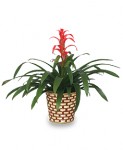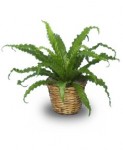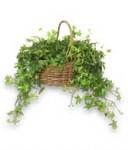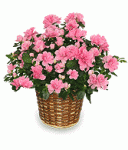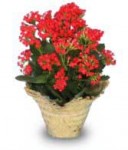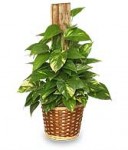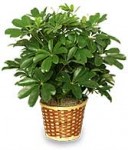Pets And Houseplants – Achieving Compatibility
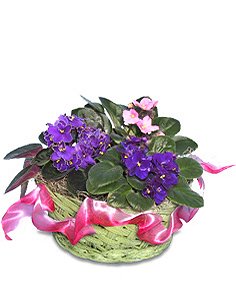 If you share your home with dogs or cats, keeping them safe and happy is often your primary concern. At the same time, having interior foliage really makes a house a home. Many houseplants actually improve air quality and create a healthy environment for you.
If you share your home with dogs or cats, keeping them safe and happy is often your primary concern. At the same time, having interior foliage really makes a house a home. Many houseplants actually improve air quality and create a healthy environment for you.
Although houseplants are pretty and help improve your life, they can sometimes pose a serious issue for your beloved pets. According of the Humane Society of the US there are 700 identified plants that have “toxic” qualities that can cause harmful side effects in animals. Does this mean you have to chose between living with your beloved pet or an awesome houseplant? NO! It doesn’t. By taking certain steps and knowing which houseplants are dangerous to your cat or dog, you can create a pet safe home that includes beautiful foliage.
Keeping Your Pets and Your Houseplants
Before you throw out all your houseplants for the sake of your kitten or puppy, take time to consider whether you’re dog or cat can live with your plants. Some dogs and cats never touch houseplants while others can’t leave them alone. You can still enjoy these plants, even ones potentially “toxic” to pets.
You can protect your pet by taking a few preventative steps. Place plants on stands or hang them out of your dog’s reach. This can work with cats as well. However with cats, the plant must be placed so that your kitty can’t climb up to or jump on to the hanging plant. Otherwise, all questionable plants will need to be placed in a room unavailable to the cat.
If you receive a new plant as a gift, take time to see if your pet is even interested in it. Most cats and dogs simply ignore houseplants and leave them alone. Kittens and puppies are a bit different. They are extremely curious and will chew or play with just about anything. If you have a puppy take time to train them to leave the houseplants alone. Spritzing them with water when they get near the plant is usually a sufficient deterrent. With kittens it’s a bit harder to train them; you may have to put the plants out of the kittens reach.
If you’re still leery about exposing your pet to houseplants, select houseplants that are considered non-poisonous to dogs and cats.
Ten Houseplants Safe For Dogs & Cats (see gallery below)
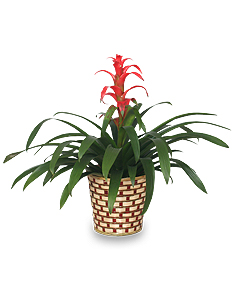 African Violet – Saintpaulia ionantha
African Violet – Saintpaulia ionantha- Bromeliad – Guzmania lingulata major
- Bird Nest Fern – Asplenium nidus
- Parlor Palm – Chamaedorea elegans
- Ponytail Palm – Beaucarnea recurvata
- Christmas Cactus – Schlumbergera bridgesii
- Prayer Plant – Calathea insignis
- Sweetheart Vine (Wax Plant) – Hoya kerrii
- Boston Fern – Nephrolepis exalta bostoniensis
- Peperomia – most types
Be aware of plants that have “toxic” properties such as the ones listed below. Keep in mind that not all “toxic” plants are lethal. They may only cause vomiting, stomach upset or other issues. You will still want to keep them from curious pets.
10 Common Houseplants Toxic To Dogs or Cats (see gallery below)
- English Ivy (Hedera helix) – Ingestion of leaves & berries can cause stomach irritation, diarrhea, troubled breathing. Can be fatal.
- Cyclamen persicum – Root & leaf ingestion can cause severe stomach irritation, intense vomiting. Can be fatal.
- Easter Lilies (Lilium longiflorum) – Highly toxic to cats causing vomiting, lethargy, and kidney failure. Can be fatal.
- Azalea/Rhododendron – Toxins affect central nervous system. Mild poisoning causes vomiting, drooling, diarrhea, weakness and depression. Severe poisoning can lead to coma and death from cardiovascular collapse.
- Chrysanthemums contain pyrethrins causing mild cases of dermatitis, excessive drooling, loss of coordination, vomiting and diarrhea.
- Kalanchoe blossfeldiana causing gastrointestinal irritation and problems with heart’s cardiac rhythm and rate in dogs.
- Hyacinth bulbs, leaves and flowers are toxic to dogs causing vomiting and diarrhea. Not usually fatal.
- Pothos (Scindaspus aureus) – Causes significant mouth and oral cavity irritation, diarrhea, and swelling of the throat. Large Quantities are toxic causing liver and kidney damage in dogs.
- Peace Lily (spathiphyllum clevelandii) – Contains calcium oxalate crystals which cause oral irritation, excessive drooling, vomiting and difficulty in swallowing. If medical attention is not giving the degree of illness may include liver and kidney damage.
- Schefflera (Brassia arbicola) – Contains calcium oxalate crystals. Symptoms are the same as the peace lily and pothos plants.
These short lists of safe and toxic plants are just a little sample of houseplants used in homes across the world. For a more thorough list check out the ASPCA’s plant list.
If Your Pet Ingests or Chews On A Toxic House Plants
Don’t panic if you catch your pet chewing on one of your houseplants. Wash out your pet’s mouth as most of the plants can cause mouth irritations. If your pet is vomiting or shows signs of distress call your vet. Collect any vomit your pet expels if possible. Give your vet as much information about the type of plant, amount ingested and the ingested parts (roots, bulbs, or leaves). It is a good idea to take a leaf from the plant to your vet.
If your pet isn’t exhibiting symptoms, check with the ASPCA Poison Control Center to help you evaluate the situation. The information will help you decide if a trip to the vet is needed or a simple home remedy will suffice. Dogs or cats who ingest “toxic” plants and have survived have done so because their owners took appropriate steps and sought medical help.
We can all live happily with our pets and our houseplants. We simply need to know our plants and how they can affect our dogs or cats. Some plants only cause mild irritation if eaten or chewed, while others can cause major illness and death. Take a few minutes to get to know your houseplants. By doing this you may save a life or least some irritation.
- Parlor Palm
- English Ivy
- Azalea / Rhododendron
- Chrysanthemums
- Kalanchoe
- Hyacinth
- Peace Lily
- Dwarf Schefflera



